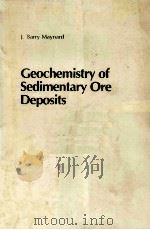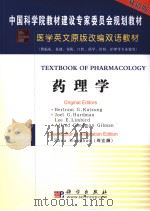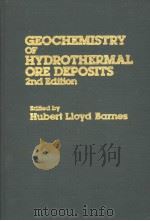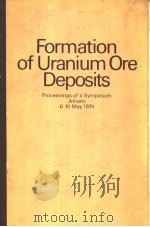《textbook of ore dressing》
| 作者 | Richards R.H. 编者 |
|---|---|
| 出版 | McGraw-hill book company ,inc |
| 参考页数 | 608 |
| 出版时间 | 1940(求助前请核对) 目录预览 |
| ISBN号 | 无 — 求助条款 |
| PDF编号 | 813814508(仅供预览,未存储实际文件) |
| 求助格式 | 扫描PDF(若分多册发行,每次仅能受理1册) |
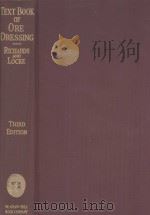
CHAPTER Ⅰ.—GENERAL PRINCIPLES1
Definition and comparison with smelting1
Physical and chemical properties of minerals as applied to ore dressing2
Fundamental concepts5
CHAPTER Ⅱ.—PRELIMINARY BREAKING6
Blasting in the mine6
Calcining for friability6
Hand breaking6
Steam and drop hammers7
Rock breakers of the Blake type9
Dodge breakers and comparison with Blake11
Spindle or gyrating breakers11
Gates breaker12
Telsmith breaker14
Comparison of jaw and gyratory breakers17
CHAPTER Ⅲ.—INTERMEDIATE AND SECONDARY CRUSHING19
Reduction gyratory crushers19
Symons cone crusher19
Traylor reduction crusher22
Newhouse crusher22
Rolls; principle and purpose23
General construction24
Shells25
Feeders25
Springs25
Driving mechanism26
Width,diameter,and speed26
Space and angle of nip27
Closed circuit29
Quality of crushing29
Capacity31
Graded crushing32
Operating data and costs32
CHAPTER Ⅳ.—STEAM STAMPS33
Classification and purpose of stamps33
Steam stamps33
Foundations,anvil blocks,mortar,screen and frame33
Shoe,stamp shaft,and driving mechanism34
Floors,bins,and feeding arrangements35
Water used and capacities35
Discharge of copper nuggets36
Uses and quality of work36
Steeple-com-pound stamps37
CHAPTER Ⅴ.—GRAVITY STAMPS AND AMALGAMATION38
Principle of action38
Foundations40
Mortar blocks41
Frames42
Mortars42
Screens43
Camshaft44
Cams45
Stem,tappet,shoe,and die47
Feeders48
Finger bars,cam sticks,and overhead crab48
Nissen stamp48
Running of stamps49
Water used49
Size of feed49
Method of feeding49
Mercury fed49
Area of discharge49
Size of screen holes and percentage of opening49
Order of drop49
Height of discharge50
Number and height of drop50
Weight of stamp and energy of blow50
Power51
Operating data and costs51
Amalgamation52
Properties of mercury52
Amalgams52
Amalgamating devices53
Plates53
Treatment of plates54
Amalgamating new plates56
Dressing plates58
Cleaning plates59
Mercury traps61
Cleaning amalgam61
Cleanup barrels61
Cleanup pan63
Squeezing,retorting,and melting63
Care and purification of mercury64
Loss of mercury65
Loss of gold65
Amalgamation apart from stamp milling65
Status of gravity stamps65
CHAPTER Ⅵ.—FINE GRINDING67
Purpose67
General principles67
Classification and application68
Arras-tra68
Grinding pans69
Revolving mills69
Application69
Grinding media69
Tube mills71
Marcy mill73
Hardinge mill73
Rod mills73
Overflow discharge74
Grate discharge74
Feeders75
Electric ear75
Liners75
Operation of revolving mills75
Speed76
Size of feed and pulp density77
Closed and open circuits77
Stage grinding79
Differential grinding79
Batch grinding80
Sizes and capacities80
Ball mills with peripheral screens81
Hadsel mill82
Chili mill82
Huntington mill83
Raymond roller mill83
Swing-hammer pulverizer85
Torrey cyclone85
Jumbo mill86
CHAPTER Ⅶ.—LAWS OF CRUSHING87
Fundamentals87
Physical properties of mineral crushed87
Impact89
Abrading89
Distribution of sizes in a crushed product89
Products from homogeneous material90
Products from heterogeneous material91
Rittinger theory of work required92
Kick's law94
Practical application of laws of crushing95
CHAPTER Ⅷ.—PRELIMINARY WASHING AND HAND SORTING96
Preliminary washers96
Trough washer96
Long tom97
Log washers97
Turbo log washer99
Wash trommels99
Washing pans100
Hydraulic giants100
Jet washer100
Hand picking or sorting100
Picking tables or belts102
CHAPTER Ⅸ.—SIZING BY SCREENS104
Principles of screen sizing104
Sieve scale104
Limits of screening105
Efficiency and rate of screening105
Shape and arrangement of holes106
Per-centage of opening107
Thickness of plate or wire107
Difficulties of screening108
Feeding109
Classification of screens109
Grizzlies109
Rowand screen111
Ring grizzly111
Drop-bar grizzly112
Shaking screens or riddles112
Ferraris screen113
Gyrating screens114
Impact screen114
Vibrating screens114
Hummer screen115
Leahy screen117
Niagara screen118
Symons screen119
Allis-Chalmers screen119
Capacity of vibrating screens119
Revolving screens or trommels120
Feeding122
Sizes123
Slope123
Revolutions123
Material123
Power124
Capac-ity124
Operating data and costs125
Tandem and concentric trommels125
Callow traveling-belt screen125
CHAPTER Ⅹ.-CLASSIFYING AND SETTLING IN WATER128
Laws of classifying by settling in water128
Free settling128
Richards spitz-lutte130
Free-settling velocities130
Formulas130
Free-settling ratios136
Hindered-settling ratios136
Tubular classifier tests on hindered settling137
Full-teeter velocities of quartz and galena139
Free settling versus hindered settling141
Application to classifier design141
Extent of classifica-tion142
Added increment142
Definition and classification of classifiers143
Classifiers using rising currents of clear water144
Principles of action144
Free-settling classifiers145
Richards-Coggin145
Evans145
Richards deep-pocket classifier147
Calculations147
Richards annular vortex classifier152
Hydraulic gold traps154
Hindered-settling classifiers154
Richards154
Constriction-plate classifier154
Fahrenwald156
Richards pulsating classifier156
Operating data157
Classifiers not using rising currents of clear water157
Rittinger spitzkasten158
Allen cone159
Callow and Caldecott cones160
Dorr thickeners160
Dorr hydroseparator162
Operating data163
Mechanical classifiers163
Dorr rake classifier163
Dorr bowl classifier165
Federal Esperanza166
Akins168
Hardinge168
Operation of mechanical classifiers168
Classification and differential grinding170
Operat-ing data and costs170
CHAPTER ⅩⅠ—COARSE-SAND CONCENTRATING BY JIGS172
Principle,purpose,and definitions of jigs172
Movable-sieve hand jigs173
Continuous movable-sieve power jigs175
Hancock jig175
Fixed-sieve jigs176
Harz jigs176
Cooley jig180
Bendelari jig180
Woodbury jigging system181
Richards pulsator jig183
Pan-American jig186
Denver min-eral jig186
Details of jigs in general187
Frames and tanks187
Hutches187
Plungers and mechanism188
Accelerated mechanisms189
Hydraulic water190
Sieves190
Number of compartments191
Height of tailboard191
Feeding and bottom bed192
Removal of coarse concentrates192
Skimming192
Automatic discharges192
Removal of tailings194
Capacity and power194
Field of work194
Theory of jigging195
Pulsion; general principles195
Pulsion-jig tests on hindered settling195
Pulsion velocity196
Number of strokes196
Length of stroke197
Suction; general principles198
Tests on suction199
Conclusions201
Bring's tests202
Effect of jig bed204
Sizing before jigging204
Operating data and costs204
CHAPTER ⅩⅡFINE-SAND AND SLIME GRAVITY CONCENTRATION206
General principles206
Concentrators with separating surface stationary206
Riffles207
Cornish frames208
Canvas tables208
Corduroy tables208
Corduroy versus amalgamation209
Fixed,circular,convex slime table210
Theory of film sizing210
Concentrators with separating surface in motion211
Cradle or rocker211
Mechanical batea211
Jerking tables212
Wilfley table212
Foundation213
Head motion213
Frame,deck,and riffles214
Feed,capacity,power,and water217
Operating conditions217
Investigation of Wilfley table work218
Agitation ratio220
Butchart table221
Deister table222
Tabling in modern mills223
Operating data and costs223
Van-ners224
Frue vanner224
Belts226
Johnston vanner226
Comparison of side-shake and end-shake vanners226
Operation of vanners227
Capacity and power229
Principle of separation229
Field of vanners229
Johnson concentrator229
Revolving,circular,convex slime tables or round tables230
Anaconda round table231
CHAPTER ⅩⅢ.—FLOTATION232
Definition,principle and application232
History of development233
Theo-retical basis234
Froth formation235
Chemical treatment of minerals235
Formation of bubble-mineral complexes236
Contact angles236
Pulp pre-paration237
Particle size237
Pulp density237
Conditioning237
Reagent addition and feeders238
Special treatments239
General considera-tions240
Frothing agents and their action240
Collecting agents and their action242
Modifying agents245
pH and pulp-control reagents245
Depressing agents246
Activating agents247
Sulphidizing agents247
Dispersing agents,'deflocculators,and protective colloids248
Summary list of reagents249
Flotation machines251
Vortex type251
Minerals Separation standard and subaeration machines251
Fahrenwald (Denver subaeration)255
Operation and capacity256
Pneumatic machines256
Callow256
Mac-Intosh257
Air-jet type258
Southwestern air-lift258
Air supply259
Comparison of machines259
Flotation circuits260
Use of regrinding263
Unit cell263
Disposal of concentrates264
Flotation practice264
Sulphide copper ores265
Mixed copper ores266
Anaconda mill266
Miami mill268
Noranda mill271
Native copper ores275
Lead,zinc,and lead-zinc sulphide ores275
Balmat mill277
Gold and silver ores278
McIntyre-Porcupine mill280
Copper-lead sulphide ores282
Copper-zinc sulphide ores282
Copper-lead-zinc-iron sulphide ores283
Copper-nickel sulphide ores283
Molybdenum sulphide ores283
Metallic oxidized ores284
Nonmetallic ores and coal284
Agglomeration and tabling285
Present and future286
CHAPTER ⅩⅣ.—MISCELLANEOUS PROCESSES OF SEPARATION288
Magnetic separation and concentration288
Application288
Electromagnets289
Action of substances in magnetic field291
Preparation,dust,drying,and current291
Classification292
Primary-magnet type292
Cobbing magnets292
Magnetic pulleys293
Tramp iron293
Dry drum-type293
Grondal294
Dry belt-type294
Wetherill294
Ball-Norton296
Crockett wet-belt magnet298
Davis magnetic log washer298
Edison magnet298
Induction-magnet type298
Stearns298
Dings300
Johnson300
Roasting and calcining for magnetism300
Sulphides301
Oxides302
Carbonates302
Experiments302
Furnaces303
Electrostatic separation303
Pneumatic concentration305
Air-blast machines306
Mumford and Moodie306
Ray-mond306
Gayco307
Pape-Henneberg momentum separator309
Air jigs309
Hooper-Paddock309
Pneumatic tables310
Sutton,Steele and Steele310
Dry blanket311
Dry panning311
Comparison of dry and wet separations311
Adhesion; greased table312
Disintegrating and screening312
Decrepitation and screening312
Roasting for porosity312
Centrifugal separation313
Weathering313
Agglomeration and tabling313
Heavy-liquid and heavy-density processes314
Lessing,duPont,Wuensch,and Chance processes314
Air-sand process315
CHAPTER ⅩⅤ.—ACCESSORY APPARATUS316
Bins and receiving floors316
Samplers and sampling317
Automatic feeders322
Distributors325
Water regulators325
Conveyors326
Blaisdell sys-tem of ore handling328
Bucket elevators329
Sand wheels332
Centrifugal pumps332
Wilfley sand pump332
Diaphragm pumps332
Frenier spiral sand pump333
Launders336
Unwaterers339
Filters340
Oliver filter342
American343
Dorrco345
Genter346
Driers347
Dust collection and removal349
Removal of wood and chips350
Weighing350
CHAPTER ⅩⅥ.—MILL PRINCIPLES AND PROCESSES351
Summary of principles and unit processes351
Combinations353
Mill data and flow sheets354
Mill site and arrangement355
Hillside type; Alaska Juneau mill356
Flat-site plant; Southeast Missouri lead mill361
Gently sloping site; Copper Queen mill365
Flow sheets of copper concentrators371
Magna mill372
Calumet and Hecla mill375
Lead and zinc concentrators380
Bonne Terre mill381
Tri-State zinc-lead mills386
Eagle-Picher central mill388
Hecla mill394
Midvale mill398
Sullivan mill403
Precious-metal concentrators409
Homestake mill410
Montezuma-Apex mill412
Scrub Oak magnetite mill417
Nonmetallic plants420
Phosphate concentration421
International phosphate washer 92422
Pembroke phos-phate flotation mill422
CHAPTER ⅩⅦ.—GENERAL CONSIDERATIONS426
Mill location; general principles426
Flat and sloping sites427
Mill design and construction428
Process and flow sheet428
Size of mill and expected life430
Choice of equipment430
Power and its transmission432
Mill layout and arrangement434
Horizontal and vertical organization435
Con-struction of mill buildings436
Complete plant437
Heating,lighting,and ventilation438
Mill operation438
Continuity438
Repairs,maintenance,and lubrication439
Labor439
Water440
Storing and shipping concen-trates440
Disposal of tailings441
Records,testing,and control441
Eco-nomic factors443
Smelter schedules for calculating the value of copper, silver,lead,and zinc ores443
Accounts and reports451
Milling costs452
First or construction cost452
Overhead costs453
Operating costs454
Operat-ing-cost data456
Snap estimates456
Evaluation of results461
Metal-lurgical balance461
Recovery462
Concentrate grade463
Ratio of con-centration463
Extent of concentration463
Efficiency indices464
CHAPTER ⅩⅧ.—ORE EXAMINATION AND TESTING466
Scope and methods466
Sampling and assaying466
Crushing467
Sizing467
Screen tests468
Ro-tap sieving470
Elutriation470
Air elutria-tion471
Haultain Infrasizer472
Sedimentation472
Recording and plot-ting of sizing tests472
Calculations of average particle size474
Assay-size analyses476
Heavy-liquid tests476
Visual examinations476
Microscope477
Polished sections477
Briquettes477
Mineralogical analysis of bri-quettes478
Process testing478
Hand picking478
Jigging, vanning, and panning479
Tabling480
Haultain Superpanner481
Classifiers482
Magnets483
Davis magnetic tube tester484
Roasting for magnetism484
Amalgamation and stamp milling485
Flotation testing486
Preparation of sample486
Reagents487
pH measurement488
Machines and procedure488
Pilot-plant testing490
Locked-batch tests490
Tabulation and com-putation of results491
Distribution of middlings492
Comparison of labora-tory results with plant results493
Records and data494
Summary of testing procedure494
One variable at a time496
CHAPTER ⅩⅨ.—COAL DRESSING497
Problem, purpose, and advantages498
Impurities499
Methods500
Deg-radation500
Summary of operations; anthracite501
Bituminous502
Essential steps503
Breaking503
Rolls505
Needle crushers and pick breakers507
Hammer mills507
Pulverizers507
Bradford breaker507
Sizing and grading508
Screening510
Van Lear screening and picking tipple512
Hand picking513
Mechanical pickers513
Emery513
Pardee spiral514
Flat pickers515
Mechanical cleaning516
Wet versus dry meth-ods517
Sizes cleaned517
Heavy-density methods518
Chance518
Lessing, Conklin, deVooys, and Wuensch processes522
Ascending-current washers522
Hydrotator523
Menzies Hydroseparator524
Menzies Cone526
Launder washers; Rheolaveur process526
Jigs530
Wilmot-Simplex530
Elmore531
Link-Belt Simon-Carves533
Vissac535
Tables535
Flotation and the Trent process536
Pneumatic tables536
Pneumatic jigs; Stump Air-flow539
Air-sand process539
Float-and-sink tests540
Wash-ability curves543
Sizing tests545
Evaluating results546
Efficiency for-mulas546
Daily control tests549
Dewatering and drying549
Purposes549
Moisture in coal549
Natural drainage550
Centrifugal dewatering550
Thickening and filtering552
Heat drying553
Recovery of fines; water clarification and circulation553
Moving coal in the plant554
Breakage and degradation554
Chutes554
Conveyors555
Elevators557
Feeders557
Pyrite recovery557
Dedusting557
Chemical and oil treatment558
Plant practice559
Delta jig plant559
United Pocahontas wet-jig and dry-table plant561
Fidelity Rheolaveur plant562
Kehoe-Berge Chance anthracite breaker564
Costs, power, water, and labor566
APPENDIX569
Equivalents of weights and measures569
Atomic weights570
Specific gravi-ties of minerals and common metals571
Weight of broken ore572
Mill formulas and calculations573
Standard gages for brass and iron wire576
Tyler standard testing sieves576
Diameters and areas of circles577
Quartz diameters and velocities for computing classifiers580
INDEX585
1940《textbook of ore dressing》由于是年代较久的资料都绝版了,几乎不可能购买到实物。如果大家为了学习确实需要,可向博主求助其电子版PDF文件(由Richards R.H. 1940 McGraw-hill book company ,inc 出版的版本) 。对合法合规的求助,我会当即受理并将下载地址发送给你。
高度相关资料
-
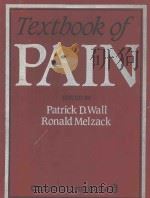
- TEXTBOOK OF PAIN
- 1984 CHURCHILL LIVINGSTONE
-

- TEXTBOOK OF BOTANY
- 1956 UNIVERSITY TUTORIAL PRESS LTD.
-

- TEXTBOOK OF GYNECOLOGY
- 1958 THE WILLIAMS % WILKINS COMPANY
-

- TEXTBOOK OF SURGERY
- 1964 E & S LIVINGSTONE LTD
-
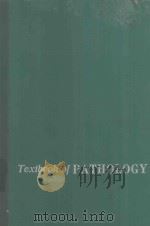
- TEXTBOOK OF PATHOLOGY
- 1964 MCGRAW HILL BOOK COMPANY
-

- TEXTBOOK OF NEUROANATOMY
- 1963 PITMAN MEDICAL PUBLISHING J.B.LIPPINCOTT COMPANY
-
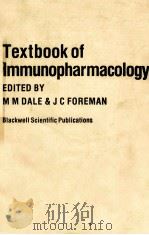
- Textbook of immunopharmacology
- 1984 Blackwell Scientific Publications : Blackwell Mosby Book Distributors
-
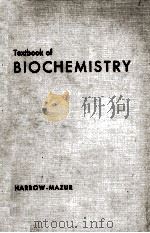
- TEXTBOOK OF BIOCHEMISTRY
- 1958 W.B.SAUNDERS COMPANY
-

- TEXTBOOK OF SERVOMECHANISMS
- 1955 ENGLISH UNIVERSITIES PRESS LTD
提示:百度云已更名为百度网盘(百度盘),天翼云盘、微盘下载地址……暂未提供。➥ PDF文字可复制化或转WORD
